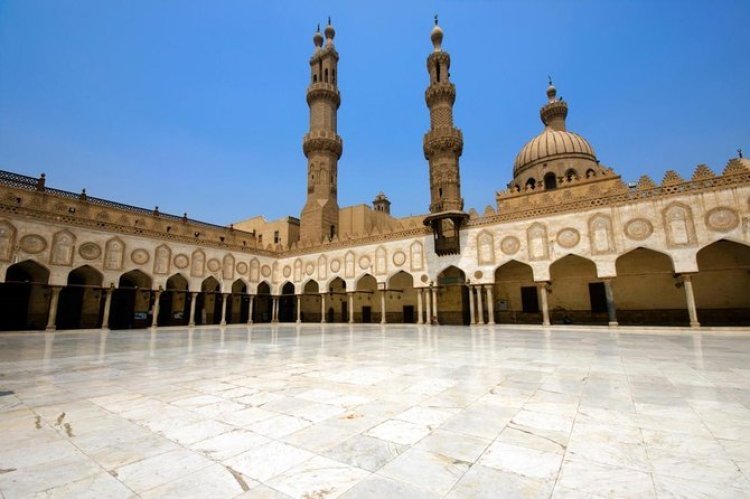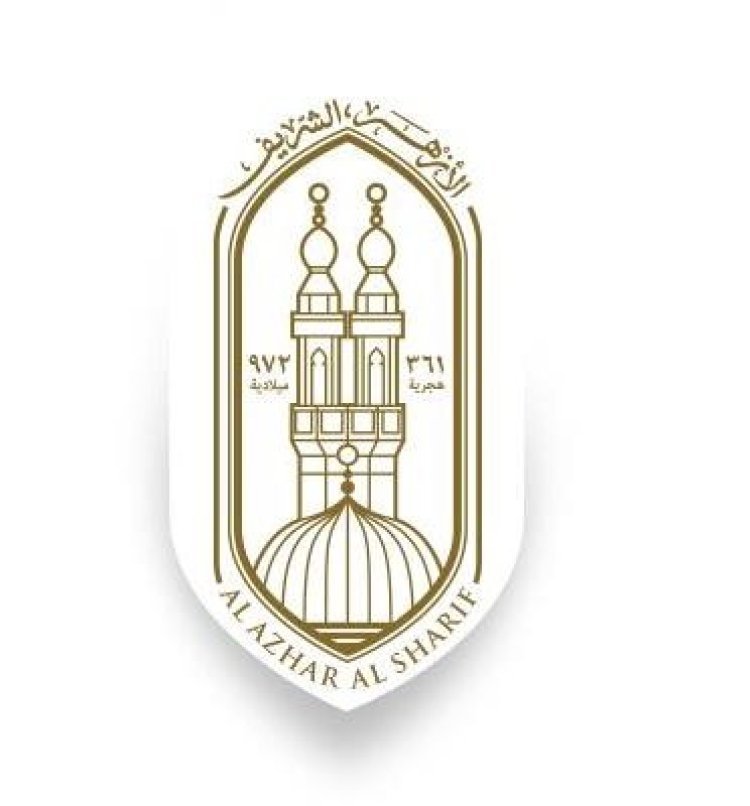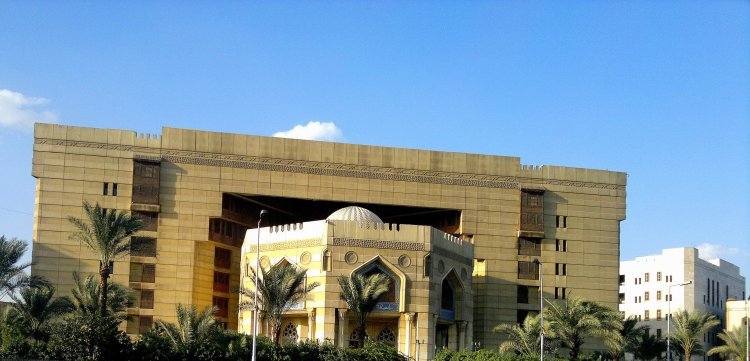Al-Azhar Mosque… the oldest integrated global university
Al-Azhar Mosque… the oldest integrated global university
It is one of the most important university mosques in Egypt and the most famous in the Islamic world. Its hallways have embraced millions of students and teachers, until tomorrow is the Qibla of knowledge for all Muslims, the fountain of moderation, and the lofty beacon of Islam. It has exceeded a thousand years of age, bearing its scientific, religious, national and civilizational responsibility towards the people and the whole Islamic nation. It had a civilized symbol, a major scientific reference, and an honest advocacy platform.
Although it was established for the purpose of spreading the Shiite sect when Egypt was conquered by Jawhar al-Siqilli, the leader of al-Mu'izz li-Din Allah, the first of the Fatimid caliphs in Egypt, it is currently teaching Islam according to the Sunni sect. After he established the city of Cairo, he proceeded to establish and complete the Al-Azhar Mosque, and the first Friday prayer was held there on the 7th of Ramadan 361 AH - 972 AD. Thus, it is the first mosque established in the city of Cairo, and it is the oldest existing Fatimid monument in Egypt. Historians have differed in the origin of naming this mosque, and it is more likely that the Fatimids named it Al-Azhar after Fatima al-Zahra, the daughter of the Prophet Muhammad - may God’s prayers and peace be upon him - and a tribute to her memory.
The Mamluk era is considered one of the most glorious and best times in Al-Azhar Al-Sharif. Where the Mamluk rulers raced to pay attention to Al-Azhar’s students, sheikhs, and architecture, and they expanded spending on it, paying attention, and even adding to its architecture.
In the Ottoman era, the Ottoman sultans showed great respect for the mosque and its people, despite his resistance to them and his standing with the Mamluks during their war with the Ottomans. However, this respect did not translate practically into the form of caring for and caring for its architecture or spending on its sheikhs and students.
However, during that period, the mosque became the best place for all Egyptians and the first to receive science and jurisprudence in the religion through it. It became a center for the largest gathering of Egyptian scholars. It also began teaching some sciences of philosophy and logic for the first time.
During the French campaign against Egypt, Al-Azhar was a center of resistance and in its vastness its scholars planned and called for the first Cairo revolution, and endured its scourge and its sanctity. After the second Cairo revolution, the senior scholars of Al-Azhar were subjected to the most severe forms of torture and pain, heavy fines were imposed on them, and their property and their wives’ gold jewelry were sold to fulfill them. Following the killing of Clipper, Al-Azhar afflicted some of its students, led by Suleiman Al-Halabi, and while the French occupation was breathing its last, orders were issued to arrest Al-Azhar Sheikh, Sheikh Abdullah Al-Sharqawi. Thus, the crisis of mistrust between Al-Azhar and the French occupation authorities continued until his last days and his departure from the country.
After the French withdrew from the country, Muhammad Ali Pasha appointed himself governor of Egypt in response to the people. He is considered the founder of the Alawite dynasty that ruled Egypt from 1805 to 1952. He sought to consolidate his rule by approaching Al-Azhar scholars, and his sons and grandchildren followed his path, the last of whom was the king Farouk, who abdicated the royal throne because of the 1952 revolution, and in the wake of that and in 1961 and in accordance with the law issued in the same year, the establishment of Al-Azhar University was officially announced and many colleges were established.
The architecture of the Al-Azhar Mosque throughout the ages
Throughout the ages, the Al-Azhar Mosque, from its inception until the present time, has received the attention of caliphs, sultans, princes and rulers in its architecture in terms of expansion, construction and restoration, especially the Mamluk era. The most recent of these was the comprehensive restoration works that ended in 1439 AH / 2018 AD, which lasted about three years, and covers an area of approximately 12,000 square meters.
The educational history of Al-Azhar
Al-Azhar Mosque is the oldest integrated university in the world in terms of faculty members in various disciplines and doctrines, students from all over the world, textbooks, public libraries, and university housing with all means of subsistence for free, and it is the pioneer of progress and prosperity, and the address of the ability of the Egyptian people in particular, the Arab and Islamic peoples in general are ahead in civilization and scientific achievement. Over the centuries, his generosity was not limited to the sciences of Sharia and language, but rather extended to the worldly sciences that benefit all humanity.
Since Al-Azhar Mosque became a scientific university, the study proceeded in an innate and smooth manner, without legalization or complication. The student would come to his court, desiring to seek knowledge, and he was not deterred by age restrictions, and the number of years he spent in the lesson did not stand in his way, but he frequented whomever he wanted from the professors, drawing from the abundance of their knowledge what he wanted. In the beginning, the study at Al-Azhar Mosque was based on teaching religious and Arabic sciences, and there were no exams or certificates. Rather, the sheikh was assigned a column in the Al-Azhar Mosque, and he delivered his lessons at a certain time of every day, anyone who wants from the neighborhood or others listens to him without restriction, so they sit around him in circles, they listen to him and write what he dictates. If one of the students likes to understand the lessons, he goes to the Sheikh and listens to what he has memorized or understood, and the Sheikh discusses it with him. If the student was successful in the discussion, the Sheikh allows him, and the mainstay of the study at that time was the discussion and dialogue between the students and their professors in a way that educates the mind and develops their understanding. They remained on that for a long time, until the situation required the establishment of special laws for Al-Azhar, its students, scholars, administration and the studies in it.
Academic sciences:
The sciences taught in the Al-Azhar Mosque were brought up on twenty sciences such as: jurisprudence - origins of jurisprudence - interpretation - hadith narration and knowledge - term hadith - monotheism - philosophical wisdom - mysticism - grammar - morphology - logic - meanings - statement - Badi' - arithmetic - algebra and interview - Astronomy - Language - Status - Presentations - Rhymes - Body.
Study day system:
The study at Al-Azhar Mosque started after the dawn prayer until the evening prayer.
Education stages:
It was known among students and scholars at that time that the study was divided into three stages: the first stage, in which easy books were studied by a group of junior professors. The second stage, in which intermediate books were studied by more qualified professors than the professors of the first stage, and the third stage, in which they were taught the most important of books and the most difficult of them at the hands of a group of genius scholars. If the student had finished studying the small books and wanted to move to something higher than it, he would move from himself to the circles of the sheikhs who taught the major books, and so on until he completed his study.
The hallways of Al-Azhar are a symbol of universality and Arab and Islamic interdependence
Throughout its history, Al-Azhar has been - and still is - opening its doors to scholars and students thirsty for science and knowledge from inside and outside Egypt without discrimination or exclusion. As it represents the scientific Kiblah of all Muslims in the east and west of the earth, and the model to be followed in Arab and Islamic interdependence, and it has become unique from other Islamic universities throughout the ages by the universality of its message, which is based on being the original source of Islamic, Arab and mental sciences, and the permanent home for students of science from all over the Islamic world, and its firm, active, positive and continuous role in serving the advancement of Islamic and human civilizations.
One of the well-established traditions that remained closely connected to the scientific and social history of Al-Azhar as a university is that it singled out for each nationality and people of the region from its students who came to it from various parts of the Arab and Islamic world “a hall” in which they live permanently free of charge throughout the years they were spending in acquiring sciences in its vastness. They are places for complete subsistence free of charge, including food, accommodation, clothing, rations, salaries, and many provisions, and other great services in honor and comfort for these neighbors. The hallways of Al-Azhar are a historical and civilized symbol that testifies to the universality of Al-Azhar and its scientific and social role throughout the ages.
The following is a brief summary of these hallways:
First: the hallways of the arrivals:
- The Turks’ Hall: This hall is dedicated to the Turkish race coming from the continents of Asia, Europe and some islands of the Mediterranean.
- Levantines Hall: It is dedicated to the arrivals from the Levant (Syria - Palestine - Lebanon - Jordan).
- Al-Haramain Hall: This hallway is dedicated to arrivals from the country of the Two Holy Mosques.
- Yemenia Hall: This hall is dedicated to students coming from Yemen.
- The Kurdish Hall: It is dedicated to Sunni Kurdish students coming from northern Iraq, the Levant, Anatolia and others.
- Al-Baghdadiah Hall (Al-Baghada): This hall receives immigrants from Iraq, Bahrain and Kuwait.
- Sulaymaniyah Hall: It accepts students coming from Afghanistan.
- The Indians Hall: This hall was intended for students coming from India.
- Java Hall (Java): It was intended for arrivals from Indonesia, the Philippines and Malaysia.
- The Moroccans Hall: The Moroccans Hall was one of the first halls established in the Al-Azhar Mosque. It accepted only those who were in Morocco (Tripoli, Tunis, Algeria, Marrakesh), and it accepted only the owners of the sect.
- Al-Sinariya Hall: It is designated for students from Sennar region in Sudan.
- The Dakarna Hall, Darfur: It was designated for the arrivals from the countries of Darfur, Sennar and Takrur.
- The Dakarna Salih Hall: It was designated for arrivals from the region of Chad and the neighboring countries in the middle of the African continent.
- The Barbarians' Hall: It was designated for students coming from Mauritania and the neighboring provinces.
- Al-Jabar Hall: It was designated for arrivals from Abyssinia and the coasts of the Red Sea.
- Al-Bernawi Hall (Al-Berno): It was dedicated to students coming from West Africa, such as Senegal, Niger, Guinea, and the Gold Coast (Ghana).
Other halls were established in the Al-Azhar Mosque in the twentieth century, such as the halls of China and South Africa.
Second: The hallways of the Egyptians:
- Al-Sa'ida Hall: It was designated for students coming from the regions of Upper Egypt.
- Al-Sharaqawh Hall: It was designated for students from Sharqiah region.
- Hallway (corner) for the blind: It is designated for blind students.
- Al Baharwa Hall (Al-Buhaira): It is designated for students coming from Buhaira region.
- Al-Fayyumah Hall (Al-Fayma): It was designated for students coming from Fayoum region.
- Al-Fashniyah Hall: It was designated for students coming from Beni Suef region.
- Al-Shanwaniyah Hall (Al-Ajahar)
- Ibn Muammar Hall: It is one of the most famous halls of Al-Azhar Mosque, because it was not assigned to a particular nationality, geographic region, or religious sect.
- Al-Aqbghawiya Hall: It was designated for students who attend seminars in this school.
- The Hanafi Hall (Hanafiya): It is dedicated to students of the Hanafi school of thought.
- The Hanbali Hall: It is dedicated to students of the Hanbali school of thought.
- The Abbasid Hall: It was designated as a headquarters for the administration of Al-Azhar, the establishment of official ceremonies in it, and for the residence of students of some corridors of Egyptians and expatriates. In addition to the headquarters of the Al-Azhar doctor and pharmacist, and the Fatwa of the Egyptian Homes.
The halls of Al-Azhar Mosque continued to be filled with neighbors, performing their scientific and social role until the establishment of the Islamic City of Missions and it began to be filled with students on 12 Rabi’ al-Awwal 1379 AH / 15 September 1959 AD.
Al-Azhar is the source of patriotism throughout the ages
The comprehensive history of Al-Azhar Al-Sharif, as a university, and the role of its scholars in various aspects of Egyptian life is rich in the many immortal positions in which Al-Azhar was at the forefront of events, carrying the torches of guidance and progress, asserting the truth. The scientific leadership did not prevent it from national leadership; throughout its history, Al-Azhar has represented the original source of patriotism and the fortress for defending Arab, national, and even humanitarian issues.
And the mosque is still standing tall to this day, its minarets defying time and the arches of its cloud-scholars reaching out, not relentless to the aggressor, nor bowing to the arrogant, proclaiming the truth and calling to it as long as its walls and minarets remain.
Resources
Al-Azhar website




